PPT 2013 – New Format Picure Dialog
Here is the familiar Format Picture dialog from PPT 2010:
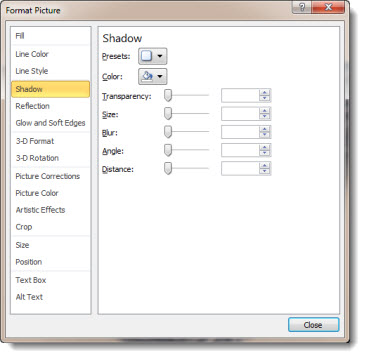
In PPT 2013, the tools options and features remain the same, but the dialog gets a remake. The Format Picture ribbon shows the Metro icons:

Opening the Format Picture dialog opens a new pane on the right:
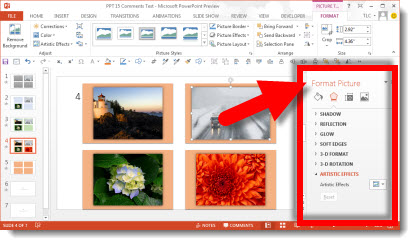
This new single pane is where all of the formatting options are accessed:
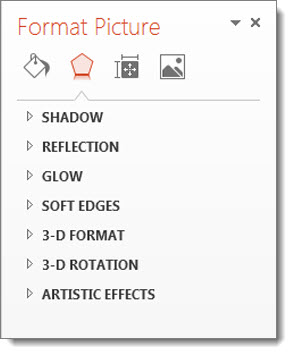
Select a tool and the dialog box extends to show the formatting options.
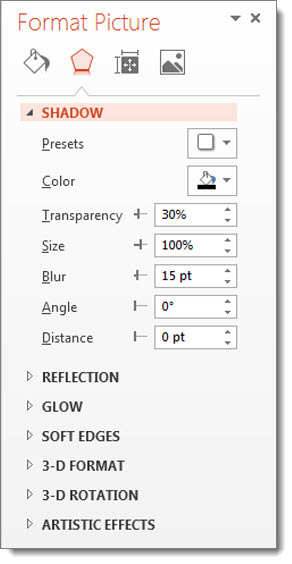
Select another tool and the box continues to extend and reveal those formatting options.
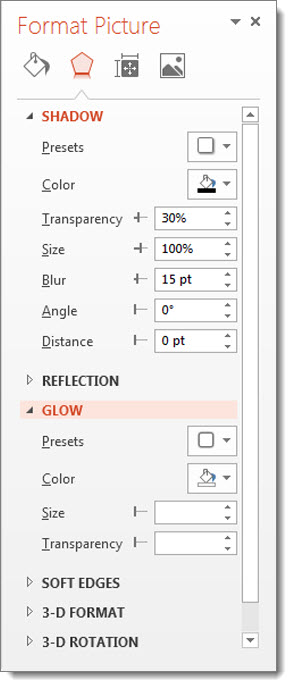
In addition, the Format Dialog pane can be detached from the UI and become a free floating dialog box. When floating, the same expanding list and organization of tools is seen. The floating dialog is not bound to the application window and can be positioned on a second monitor.
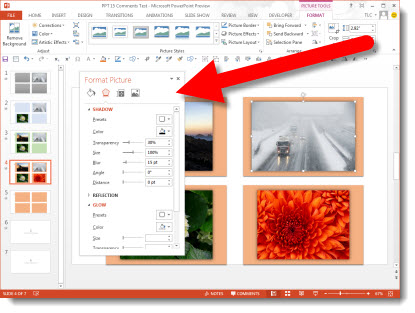
Using the icons across the top of the Format Dialog brings up the options for:
– Fill and line
– Effects
– Size and properties
– Picture
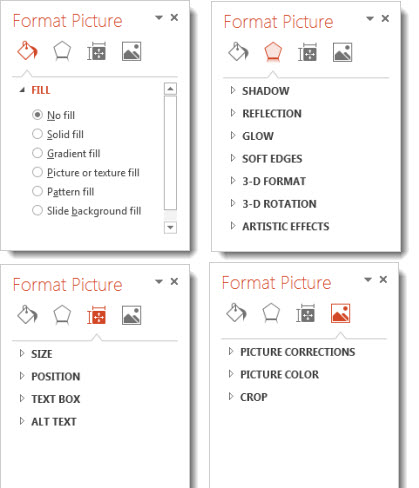
– Troy @ TLC
Office 13 App Icons
Every version of Office has its own variation of the application icons. Here is a quick history:
Office 2003 used square “chiclet” icons:
Office 2007 used alpha transparency for unique, non-square, icons and added gradients throughout:
Office 2010 used the solid square of 2003, filled with the icons and gradients of 2007, and added uniform identifying letters for each app (despite the full application suite had 3 “P” icons):
Office 2013 has both a solid square version and a alpha transparency version. The icons are developed direct from the Microsoft Metro style guide, which is simplified icons, but retaining the identifying letters (and yes, still 3 P’s):
When PowerPoint 2013 is launched, one of the immediate reactions is the orange bars and accents in the UI. One of the constants for Office is each application has an identifying color. Looking through the generations of icons, PowerPoint is orange, Word is blue, Excel is green, OneNote is purple, etc. So by the luck of history, the most visual application, PowerPoint, has one of the most offending/conflicting/glaring colors associated with it… I can say, based on the early builds of PowerPoint I looked at, the UI could have been much more distracting.
– Troy @ TLC
PPT 2013 – Updated Ribbon “Metro” UI
When you first launch PowerPoint 2013, it looks similar and different at the same time.

If you look at the ribbon, everything is in the now familiar locations and order.
When viewed more closely, you can see all of the aesthetics are new – in the “Metro” style. The Metro style was developed by Microsoft for the Windows Phone 7 interface. It is a success and has now become the basis for the Windows 8 UI and the Office 2013 UI, plus the MS website and many other interfaces.
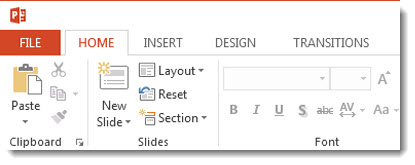
Ironically, one of the original design reasons for Metro was “a key design principle of Metro is better focus on the content of applications, relying more on typography and less on graphics.” But, PowerPoint’s interface is definitely icon oriented and where typography is used, it has mixed reviews (ie. all caps for the ribbon tabs).
Also new is the logged in user option (for my Beta install the user is “TLC”). There is a lot of new features around the user account, which are overviewed in upcoming posts.
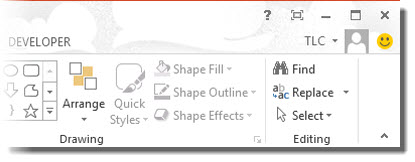
The happy face icon on the far right is a standard feature of Microsoft beta software. Clicking it brings up a dialog box to submit feedback, bug reports, etc. you discover while using the application. The smiley will not be a part of the retail version.
While the new aesthetics are not going to be everyone’s favorite, they are what is coming to a computer near you.
– Troy @ TLC
PowerPoint 2013 All This Month!
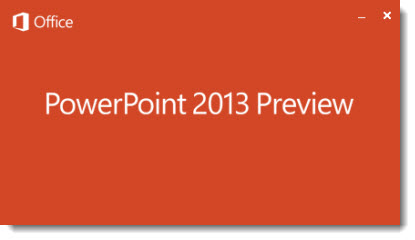
After many months of testing the new version of Office, a few weeks ago Microsoft released the Public Beta, which clears the NDA commitment and lets me do this series on the upcoming PowerPoint release. So the entire month of August will be posts about the new and exciting things in our presentation future!
Side note: I have been invited to present at this years Presentation Summit specifically about PowerPoint 2013. I am excited about the conference in general – it really is one of the best gatherings of presentation professionals in the country – and this talk will allow me to go into greater detail using PPT13 for live demos of real world presentation design and delivery scenarios. So, if you can be in Phoenix, AZ this October and want to talk about what the future holds for us in PowerPoint design and delivery, I look forward to seeing you at The Presentation Summit.
– Troy @ TLC
Happy Birthday PowerPoint!
This day, July 31, is noted as the birthday of the PowerPoint application! It has come a long way since its humble beginnings as a grayscale Mac only app! Here is a great story and quick history of PPT from the inventor of the software, Bob Gaskins, in today’s BBC online.

– Troy @ TLC
Shape Locker Add-in (Something We Have All Been Asking For!)
Last week, Excel and PowerPoint add-in developer Chirag at OfficeOne Solutions released Shape Locker. It took me only reading the description and who the developer was to know it was the answer to a lot of project requests – and this add-in does not disappoint!
Shape Locker is simply listed as a PowerPoint add-in to “Lock shape position, size, rotation, text and more with Shape Locker.” And it simply does exactly that! After downloading and installing, PowerPoint adds a new “Design Tools” tab.

There is only one button for the add-in. Select a shape in a presentation, go to the DESIGN TOOLS tab and click the LOCK SHAPES button.

The add-in is controlled through a single dialog box. Check the options desired, click OK and you are done.
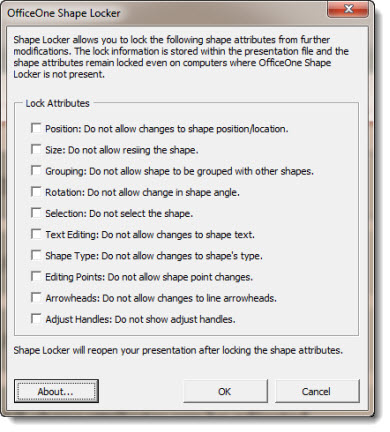
Here are my test slides:
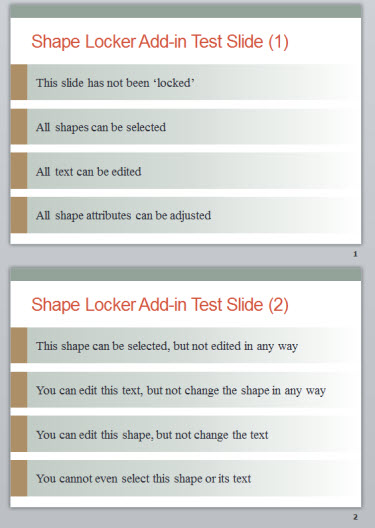
Slide 1 = is completely editable.
Slide 2 = I have applied different Shape Locker options to each text bar
You can download these slides to text the results here (57 KB .pptx)
———————–
The first bar has all editing options disabled, so you can select the shape, but do nothing to it (move, resize, change colors, edit text, etc.). Here are the Shape Locker settings applied:

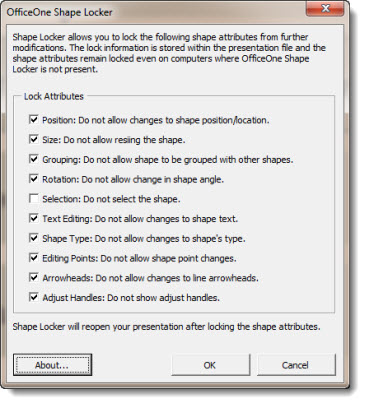
For the second text bar, I left the text editing and disabled all other options, so you can change the words but not move/resize/re-color/etc. the shape.
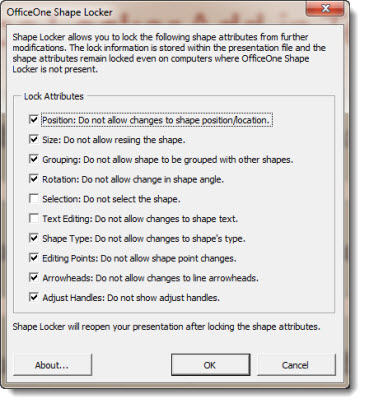
On the 3rd bar, it is the opposite of the previous. The shape can be adjusted (move, recolor, resize, etc.), but the text cannot be modified.
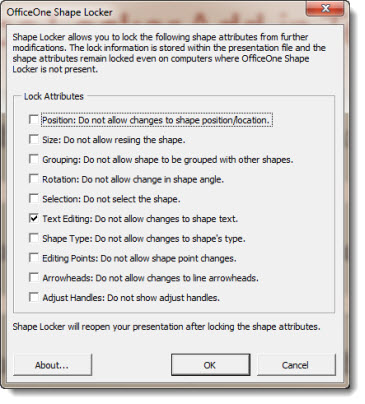
And for the final text bar, I simply used the option to disable the ability to select the shape to completely lock it from any edits.

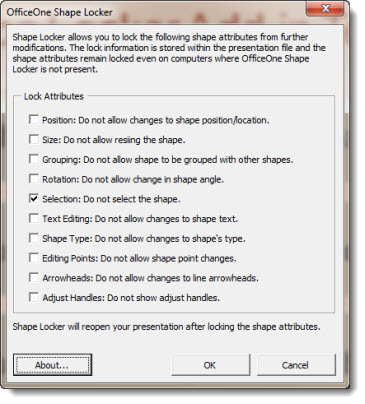
This is the functionality that users (especially myself) have been asking for since PPT 2000. But it does have a few downsides:
– Only 1 shape at a time can be locked. So if you want to lock a full presentation (or most of a presentation), it is going to take some time to click on each shape and apply the Shape Locker settings.
– To unlock a shape, it is also a time consuming process. Select a shape, open the Shape Locker dialog, uncheck the lock settings – for each shape, 1 at a time. Note: If the disable selection option (used in the final bar of the test slide) is used, that shape cannot be selected and cannot be unlocked (ie. It is permanently a part of that slide).
– Any computer with Shape Locker installed can unlock shapes.
– This add-in specifically says it works with PPT 2010 (32-bit and 64-bit) and PPT 2007. The add-in is not available in PPT 2003 and if a presentation with locked shapes is opened in PPT 2003, there are some unpredictable results. Here is the same test slide opened in PPT 2003 and among other things, if the text has been locked, it does not show up.
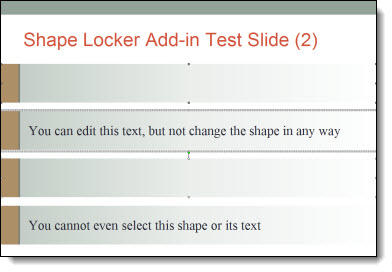
I was able to ask Chirag about a few issues and feature requests. The good news is a few features are already in the works that will resolve a few of the tedious use aspects and also add even more power to this fantastic add-in!
You can get the Shape Locker add-in from the OfficeOne site here. And if you first go to my friend Geetesh’s Indezine site, that review has a 50% off promo code (until August 31, 2012).
Last, fellow PowerPoint MVP Steve Rindsberg of PPTools offered this fun trivia about the Shape Locker add-in:
Q – “Why do they call it Shape Locker when it lets you lock placeholders, text boxes, video clips, and pictures as well?”
A – Because when coding everything on a slide is a Shape; placeholders, text boxes, videos, pictures, sounds, etc.
– Troy @ TLC
Turning Point on Computer with Multiple PPT Installs
Last week was a corporate meeting that integrated Turning Point ARS (audience response system) for a series of audience interaction questions throughout the meeting. I have used lots of ARS options, but find Turning Point the most full featured and best PowerPoint integrated package.

All of TLC Creative’s show computers have two versions of PowerPoint installed, currently all have PPT 2003 and PPT 2010. When installing the Turning Point app, I always run into the issue of it being recognized in the PPT version needed for that meeting. So here is a quick tutorial on setting up Turning Point to open and function in a specific version.
OPTION A:
1. Open TurningPoint in 2003 – Select Tools on the Turning Point toolbar

2. Go to Settings
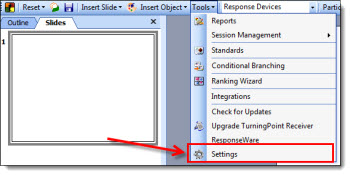
3. Under Misc >> Add in always loaded – Change to “TRUE”
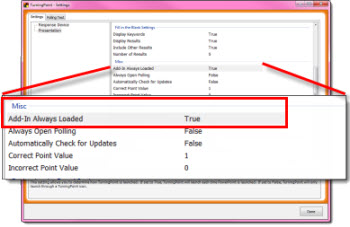
OPTION B:
Launch the TurningPoint before starting (any version) of PPT, which will open 2010 as default
1. Control Panel > Programs
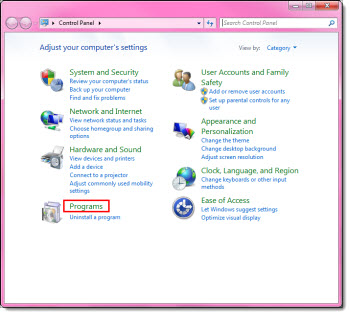
2. Click Programs & Features
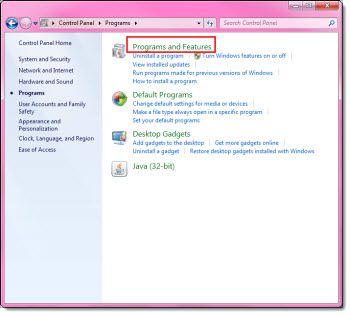
3. Scroll down to Microsoft Office 2010 > Select Change
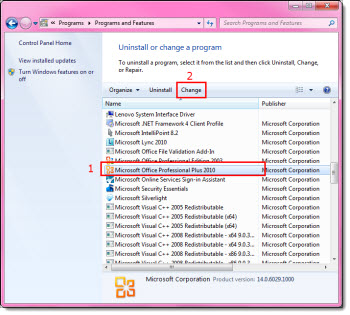
4. Repair
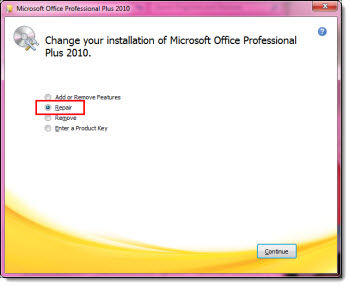
5. Wait for the repair to finish, it will ask you to restart. Once restarted when launching TurningPoint 2008 PowerPoint 2010 will be the default. TurningPoint will default to launching the last modified version of Office – so when you repair Office 2010, it prompts TurningPoint to choose 2010 as default.
– Troy @ TLC
